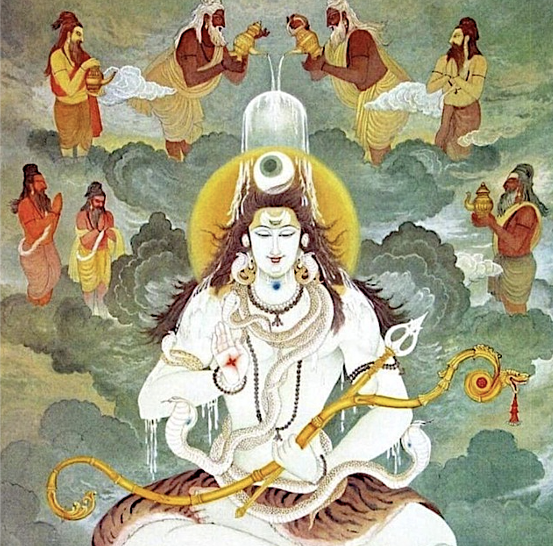
A Brief Introduction to Kashmiri Shaivism
Shaarika Munshi
Kashmiri Hindus follow a specific branch of Hinduism known as Kashmiri Shaivism. This revolves around the worship of Lord Shiva and Mother Shakti. Though all other Gods and Goddesses of Hinduism are worshipped, Shiva-Shakti are the central to our traditions. These two divinities are eternal companions, husband and wife. One cannot be without the other. Therefore, our most important festivals are those which worship Shiva and Shakti, such as Shivratri – the marriage of Shiva and Parvati.
Kashmiri Shaivism is a distinct tradition within Hinduism that developed between the 9th and 11th century AD. It propounds the idea that the essence of the individual self (jiva) is non-different from the universal consciousness, and that liberation can be achieved through the realisation of this identity. The main scripture of this tradition is the “Tantraloka”, written by Abhinavagupta in the 10th century. It teaches that the ultimate reality of the universe is consciousness, known as Shiva or Para-Shakti, and that everything in the world is a manifestation of this consciousness. Other key texts in Kashmiri Shaivism include “Shiva Drishti” and the “Spanda Karikas” which offer a comprehensive view of the tradition, including its cosmology, metaphysics, and spiritual practices.
One example of influential Kashmiri literature is the Shiva Sutras. Sutras are a set of rules or guidelines and these ones describe the nature of human consciousness, a highly condensed set of instructions that guide an individual to realise the true nature of Shiva within themselves. There are 77 sutras in total in the Shiva Sutras, categorised into 3 parts- 1st, 2nd and 3rd awakening. Each part has a varying number of sutras aimed at a different target audience.
Attributed to the Sage Vasugupta – 9th Century
- The most devout and in control individuals aiming to completely detach from the material world and aimed at total enlightenment.
- For individuals caught between the two but also wishing to become more enlightened while progressing in the material world.
- Small Baby steps, how to realise the divinity within you in everyday actions. Begin the journey towards enlightenment.
Often Kashmiri Shaivism is referred to as Trika Shastra. What does this mean? Trika means TRINITY- the trinity being different from the standard trinity in other schools of Hindu philosophy e.g. Brahma, Vishnu and Shiva. In this case the Trika or Trinity is Shiva, Shakti and the individual seeking enlightenment (Nara).
Shiva Drishti is a term used in Kashmiri Shaivism, which is a form of Hinduism that focuses on the worship of Lord Shiva as the supreme deity. It refers to the belief that the universe is a manifestation of Lord Shiva’s vision or perception. In this tradition, the goal of spiritual practice is to attain a state of consciousness in which the individual realises that they are one with Lord Shiva and that the entire universe is seen through his eyes. This cultivates a contemplative perspective and encourages the practitioner to look at the world with compassion and equanimity. This is often referred to as the “Shiva-Drishti” or “Shiva’s gaze,” which is said to bestow liberation or enlightenment.
The power and gravity of these traditions have resulted in consecration of shrines for Shiva and Shakti. Some of the Shiva shrines include Amareshvara, Vijayeshvara, Sureshvara, Harsheshvara, Mahaadeva, Bhuteshvara, Haramukheshvara. Similarly, some of the shrines dedicated to Shakti are Tripurasundari, Trisandhyaa, Jvaalaamukhi, Shailaputri, Shaarika, Shaarada, Rajni, and Khirbhavaani.
Kashmir was regarded as one of the greatest places of Sanskrit Learning in ancient India. It has contributed and influenced a variety of other doctrines in Hinduism e.g. Bhakti movement as well as Buddhism and Jainism.
Over the past few centuries, the valley was subject to numerous invasions in which there were several attempts to destroy the indigenous faith and culture. Yet by some miracle, this philosophy survived it all. To this day, Kashmiri Shaivism continues to be practised and studied by a significant number of followers in India and abroad and is considered as one of the most important and influential schools of thought in Hinduism.


